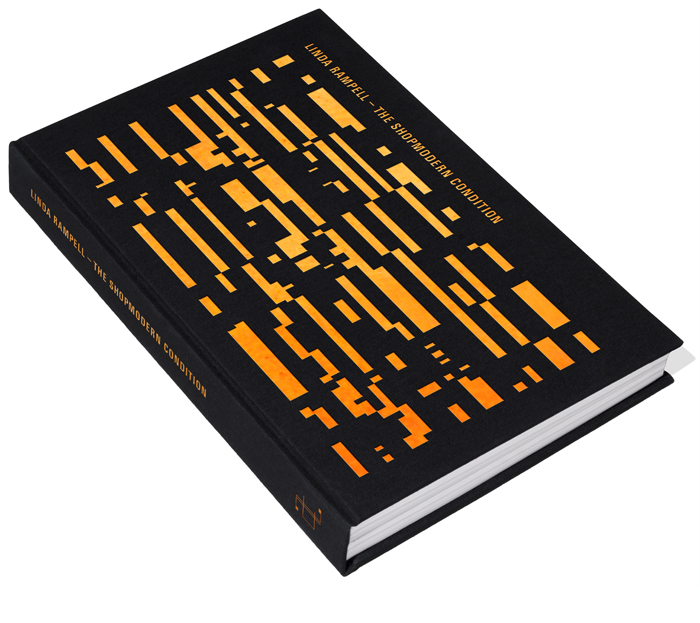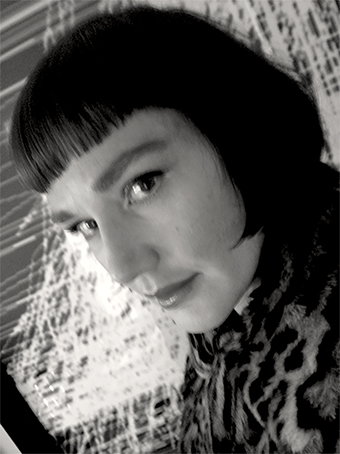
What is the meaning of life today? There are several meanings, and one of them you cannot escape: You are now living in the shopmodern condition.
Forget art history. Remember image shopping. The only -ism after postmodernism is consumerism. Aesthetics and economics have merged into aesthetonomics. Being is becoming, existence is exchange, and design has become the designed – who are you?
Google yourself up! The Internet has become the shopwindow to the world. You are designed for consumption.
Consumption of design is no longer a simple question of making purchases and then consuming goods such as cars, clothes or butter knives. Consumption is to become consumed by images. Even identities are consumed. It is no longer design that is produced to be used, but bodies (heads included) and behaviors that are designed to consume the image of self-improvements in an image-culture where being only exists as becoming. Becoming what? An identity?
Hardly. The Deleuzeian “dividuals,” split individuals, has become pluriduals, squared by offers and multiplied by desire: schizobranded are consuming identity and designing their lives in the apparent belief they are pursuing self-interest. The exploitation is hence not one-sided; it meets with demand inside Homo Capitalistes who does business via the effort of investing in identities.
Designdarwinism™ is in charge – a belief in constant improvements for oneself and one’s life, through consumption. Even the dreams are designed and invade human lives undiscerned.
Anxieties about becoming outclassed and deported to the low-status ghetto of brand culture have made consumption a life-and-death struggle.
The Shopmodern Condition offers a critical panorama of contemporary design capitalism.
This is a synopsis of the book The Shopmodern Condition by Linda Rampell.
© Linda Rampell, 2022
Title: The Shopmodern Condition
Subtitle: Aesthetonomics, the Formfascism of Fashion, Schizobranding, and the Vicious Circle of Designdarwinism™
Author: Linda Rampell
Designed & published 2016 by Gabor Palotai Design
Distributed by Idea Books
Hardcover 256 pages
Subject: Design theory
Keywords: Theories of consumption, design, fashion and art, consumerism, conspicuous and inconspicuous consumption, brand, branding, status, taste, value, class, philosophy, contemporary critical theory, sociology, psychology, psychoanalysis, libido, economics, aesthetics, mass and social media, marketing, 21st century
AUTHOR
Linda Rampell, PhD, is a design theorist, lecturer and the author of several books.
Linda Rampell has written many notable books, articles and essays. Her book Designatlas: En resa genom designteori 1845–2002 (Atlas of Design: A Journey Through Design Theory) is considered a pioneering work on the subject and was widely debated in Scandinavia when first published in 2003. For the jubilee edition, published in 2013, Rampell expanded the scope to include the years 2003–2013.
Her research project on consumer cultures and design in new media, Homo Capitalistes, commenced in 2005, has resulted in the books Designdarwinismen™: Homo Kapitalismus del I (Designdarwinism™: Homo Capitalistes Part I) (2007), a critique of contemporary consumer and brand cultures, and Freud med skalpell. Modekropp prêt-à-suppôter: Homo Kapitalismus del II (Freud with Scalpel. The Fashion Body Prêt à Suppôter: Homo Capitalistes Part II) (2008), a comprehensive investigation into body, identity, gender and fashion cultures. Other books include the novels ZOO: En designroman (ZOO: A Design Novel) (2000) and Vera von Toth: En skönhetskirurgs monolog (Vera von Toth: A Beauty Surgeon’s Monologue) published in 2019.
Together with the philosopher and art critic Lars O Ericsson she wrote CODE Manifest (Code Manifesto) (2003) and established CODE: An Organization for Contemporary Design.
Linda Rampell holds a PhD in art history and visual studies from Lund University. Her thesis, En kritisk undersökning av det modernistiska projektet för design i Sverige (A Critical Investigation of the Modernist Project for Design in Sweden) (2002), reconstructs the modernist discourse of design in Sweden with the aim of deconstructing it.
© Gabor Palotai Design
www.gaborpalotai.com
© Linda Rampell
www.lindarampell.com
